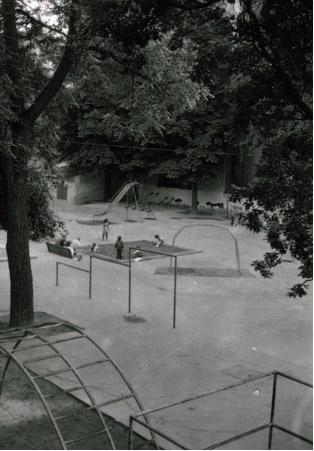
Petra Feriancova, Public Playgrounds - From My Dad's Research, 2010
BWA Wroclaw
For Kids and Adults
the play exhibition
7 September-2 October 2011
Opening:
7 pm-9 pm
The exhibition continues:
4 November-4 December 2011
Salon of the Museum of Contemporary Art, Belgrade, Serbia
BWA Wroclaw
Galeria Awangarda,
ul. Wita Stwosza 32
www.bwa.wroc.pl
Artists:
Nikos Arvanitis, Hubert Czerepok, Marko Crnobrnja, Marija Đordevic, Petra Feriancova, Karolina Freino, Nenad Jeremic, Alicja Jodko (DWF/Entropia), Vladimir Peric, Vedran Perkov, Joanna Rajkowska, Milorad Stajcic, Katarina Šeda, Janek Simon, Kama Sokolnicka, Predrag Terzic, Miloš Tomic, Vova Vorotniov, Zorka Wollny, Martin Zet
Curators: Dušica Dražic, Anna Mitus, Una Popovic and Joanna Stembalska
organizers:
BWA Wroclaw
Muzeum Sztuki Wspólczesnej Belgrad
The exhibition continues in Salon of the Muzeum of Contemporary Art in Belgrade: 4/11-4/12/2011
“For, to speak out once for all, man only plays when in the full meaning of the word he is a man, and he is only completely a man when he plays.”
J. C. Friedrich Von Schiller, Letters Upon The Aesthetic Education of Man, 1794
The works presented in the exhibition "For Kids and Adults" deal with the phenomena of play and game, without which one cannot imagine any human community. We are interested in the role played in its dynamics by space (whether real or virtual) as well as spontaneous (i.e. play) and structured (i.e. game) ludic transactions which define it-its emergence, integration, modification and decomposition.
Play is still associated with the culture of free time, which-in modern societies-is separated from what is productive, and dismissed to what is private and foolish. The social experience of the last decade forces us to look critically at that separation, and to perceive play as an inspiring experience in which we act independently from any social control and individual or group purpose, and through which we can gain space for the longed-for freedom.
Analyzing culture as a system of rules, hierarchies, behaviours, decision making, manipulation and accumulation of knowledge, play may be considered an activity through which we can introduce changes to the very system, and operate within it. How we play is preconditioned by the environment, a total system which includes space-political, social and personal. At the same time, play may influence and change that environment. Play also refers to the movement, look, quest, creation-these are "tools" which can be used in the action within a (possible) process.
And it is exactly in this sense that the exhibition refers to the play drive, a term introduced in Schiller's Letters Upon the Aesthetic Education of Man, denoting a formative process which resists time and persists from the first to the last day of man's life. As observed by Ranciere in his Esthetiques comme poitique, Schiller's revolutionary contribution was to create the idea of political change by revisiting what he called the distribution of the sensible. According to his Letters, the change would be possible if we were to cease perceiving art as separated from life, and play as separated from work.
The exhibition loosely refers to historical contexts of play and game, drawing from the political potential of "action" and transactional character which bonds the community. The explosion of the notions of play and games in various fields, from literature to architecture, coincided with essential political and social changes in this part of Europe in the 1980's and 90's. But the critical and social potential of the play drive had already been crucial in the 60's and 70's. Its subversive edge and potential was revealed in various movements, including Fluxus and Situationists, later followed in Poland, especially in Wroc?aw, by the Orange Alternative and the group LUXUS, as well as by numerous conceptual artists in former Yugoslavia.
What is displayed in the projects and works created by the invited artists is the formative, economic and political dimension of play and games, with special significance of art in public space and its critical character.


